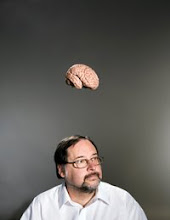The inefficiency of text has received particular attention. One of the reasons that text is less capable than pictures is that the brain sees words as lots of tiny pictures. Data clearly show that a word is unreadable unless the brain can separately identify simple features in the letters. Instead of words, we see complex little art-museum masterpieces, with hundreds of features embedded in hundreds of letters. Like an art junkie, we linger at each feature, rigorously and independently verifying it before moving to the next. The finding has broad implications for reading efficiency. Reading creates a bottleneck. My text chokes you, not because my text is not enough like pictures but because my text is too much like pictures. To our cortex, unnervingly, there is no such thing as words.
That's crazy, but true. Our brain is super fast at it, but still breaks down every letter into it's constituent images. If we want to communicate to people in a way that will reach them quickly and easily, it must be in pictures (they don't even see words).


No comments:
Post a Comment